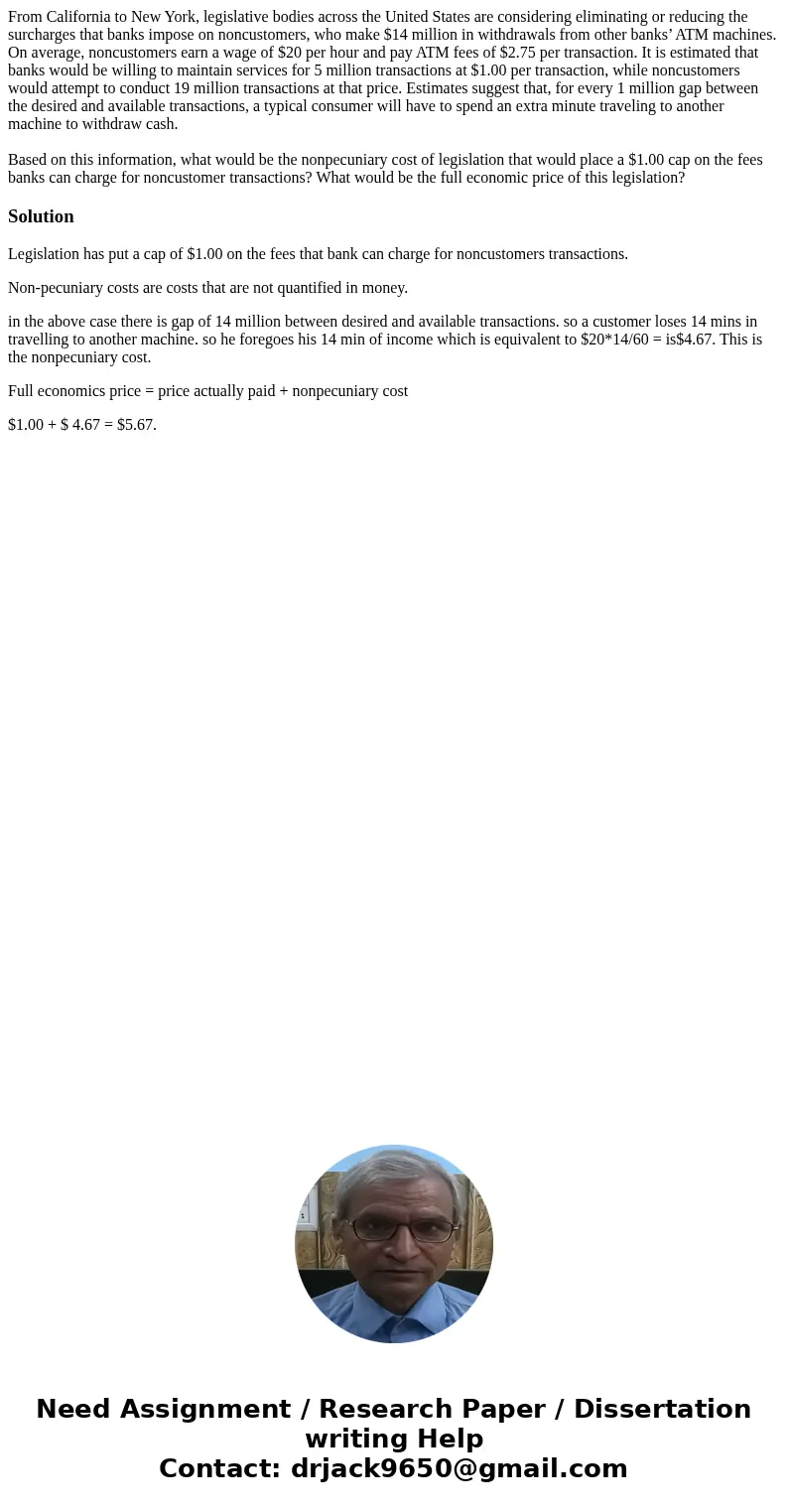From California to New York legislative bodies across the Un
From California to New York, legislative bodies across the United States are considering eliminating or reducing the surcharges that banks impose on noncustomers, who make $14 million in withdrawals from other banks’ ATM machines. On average, noncustomers earn a wage of $20 per hour and pay ATM fees of $2.75 per transaction. It is estimated that banks would be willing to maintain services for 5 million transactions at $1.00 per transaction, while noncustomers would attempt to conduct 19 million transactions at that price. Estimates suggest that, for every 1 million gap between the desired and available transactions, a typical consumer will have to spend an extra minute traveling to another machine to withdraw cash.
Based on this information, what would be the nonpecuniary cost of legislation that would place a $1.00 cap on the fees banks can charge for noncustomer transactions? What would be the full economic price of this legislation?
Solution
Legislation has put a cap of $1.00 on the fees that bank can charge for noncustomers transactions.
Non-pecuniary costs are costs that are not quantified in money.
in the above case there is gap of 14 million between desired and available transactions. so a customer loses 14 mins in travelling to another machine. so he foregoes his 14 min of income which is equivalent to $20*14/60 = is$4.67. This is the nonpecuniary cost.
Full economics price = price actually paid + nonpecuniary cost
$1.00 + $ 4.67 = $5.67.

 Homework Sourse
Homework Sourse